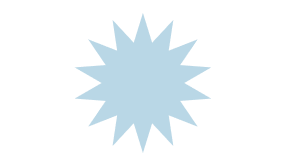From Medieval Games to Modern Growth: The Fascinating Evolution of Tarot
Tarot cards have long fascinated those drawn to the mystical and the esoteric. Originating in 15th-century Italy, these cards were not initially created for fortune-telling but were used in games. The addition of the trionfi, or triumph cards, and the odd card known as il matto, or the fool, marked the birth of the tarot deck as we know it today. This addition created a deck rich in symbolism and meaning, transcending its humble beginnings to become a powerful tool for divination and self-reflection.
The Evolution of Tarot Imagery
The imagery on tarot cards draws heavily from medieval and Renaissance Europe, capturing the essence of human experiences through allegorical illustrations. Initially, these illustrations were unnumbered, requiring users to memorise their sequence and meanings. Over time, the tarot evolved, incorporating numbers and specific symbolic imagery to assist in interpretation, making the tarot more accessible to those seeking guidance.
Tarot's journey from a medieval card game to a modern-day tool for insight and growth illustrates its timeless appeal and adaptability. Regardless of your approach—be it curiosity, spiritual exploration, or personal reflection—tarot offers a rich source of symbolism and meaning to explore.
The Origins of Tarot Cards
The captivating journey of tarot begins in the heart of 15th-century Europe, where it was first conceived not as a tool of divination but as a game of leisure among the Italian aristocracy. The standard playing cards received a significant enhancement with the introduction of 21 specially illustrated trionfi cards and the unique il matto card. Among the early decks, the Visconti-Sforza is one of the most renowned, its hand-painted cards a symbol of wealth and status.
Unlike the modern joker, the fool card has roots deeply embedded in tarot's history, offering insights into the deck's complex symbolism and use in fortune-telling.
The Evolution of Tarot: From Occultism to Personal Growth
The late 18th century marked a pivotal shift in the perception of tarot, from a game of leisure to a serious tool for divination and personal exploration. This transformation was significantly influenced by French occultist Jean-Baptiste Alliette, whose work laid the groundwork for tarot's modern applications. The tarot's evolution from a medieval pastime to a modern instrument of insight and personal growth is a testament to its enduring magic and transformative power.
The Structure of the Tarot Deck
The modern tarot deck is a collection of 78 cards, divided into the major and minor arcana.
The Major Arcana: Unveiling Universal Archetypes
The cards of the Major Arcana refer to spiritual matters and important trends in the questioner’s life - 22 cards that encapsulate profound life lessons, spiritual themes, and archetypal energies. From the Fool's embarkation on a journey of discovery to the World's symbol of completion, each card weaves a unique narrative of universal human experience. and guides the seeker through their journey towards enlightenment.
The Minor Arcana: Reflections on Everyday Life
Complementing the Major Arcana, the Minor Arcana's four suits—Wands, Cups, Swords, and Pentacles—mirror the elemental forces of fire, water, air, and earth. Wands deal mainly with business matters and career ambitions, cups with love, swords with conflict, and coins with money and material comfort.
Each suit contains 14 cards, including ten numbered cards and four court cards, illuminating the day-to-day challenges and experiences, guiding us through personal trials and opportunities. The minor arcana offers insight into the practical aspects of our lives, grounding the ethereal messages of the major arcana in tangible experiences.
Conclusion: The Timeless Appeal of Tarot
Tarot cards offer a mirror to the soul, reflecting our deepest desires, fears, and aspirations. The rich tapestry of symbols and images on each card opens a pathway to understanding our inner world and the universal truths that guide us. Whether used for personal reflection or as a tool for divination, the tarot remains a source of fascination and insight, bridging the gap between the mystical and the mundane.
Thanks to the advent of the internet and social media, tarot has seen a resurgence in popularity. These platforms have become a haven for tarot enthusiasts to share insights, connect with like-minded individuals, and offer guidance to those seeking personal reflection.
Reading tarot is an art that marries intuition with the rich symbolism of the cards. A tarot spread tells a story, reflecting the querent's life and path. Skilled readers tap into this narrative, offering insights that inspire and guide.
Embark on your tarot journey today, and let the cards unlock the doors to your inner wisdom and potential.
-

1x1 PRIVATE SESSIONS
I offer one-hour private sessions online or by phone.
-

MENTORSHIP
My monthly mentorship program helps you stay on track.
